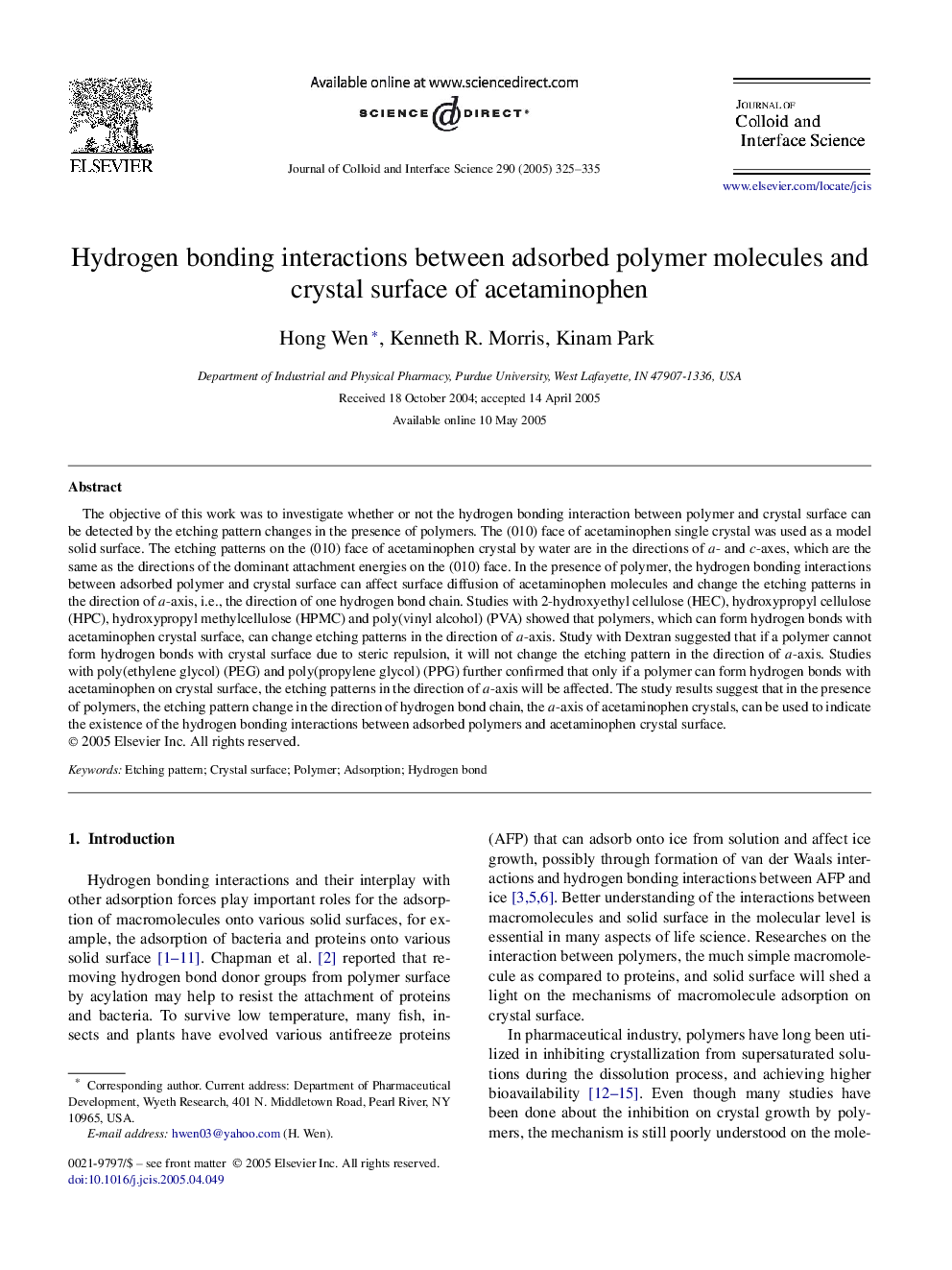| Article ID | Journal | Published Year | Pages | File Type |
|---|---|---|---|---|
| 9678988 | Journal of Colloid and Interface Science | 2005 | 11 Pages |
Abstract
The objective of this work was to investigate whether or not the hydrogen bonding interaction between polymer and crystal surface can be detected by the etching pattern changes in the presence of polymers. The (010) face of acetaminophen single crystal was used as a model solid surface. The etching patterns on the (010) face of acetaminophen crystal by water are in the directions of a- and c-axes, which are the same as the directions of the dominant attachment energies on the (010) face. In the presence of polymer, the hydrogen bonding interactions between adsorbed polymer and crystal surface can affect surface diffusion of acetaminophen molecules and change the etching patterns in the direction of a-axis, i.e., the direction of one hydrogen bond chain. Studies with 2-hydroxyethyl cellulose (HEC), hydroxypropyl cellulose (HPC), hydroxypropyl methylcellulose (HPMC) and poly(vinyl alcohol) (PVA) showed that polymers, which can form hydrogen bonds with acetaminophen crystal surface, can change etching patterns in the direction of a-axis. Study with Dextran suggested that if a polymer cannot form hydrogen bonds with crystal surface due to steric repulsion, it will not change the etching pattern in the direction of a-axis. Studies with poly(ethylene glycol) (PEG) and poly(propylene glycol) (PPG) further confirmed that only if a polymer can form hydrogen bonds with acetaminophen on crystal surface, the etching patterns in the direction of a-axis will be affected. The study results suggest that in the presence of polymers, the etching pattern change in the direction of hydrogen bond chain, the a-axis of acetaminophen crystals, can be used to indicate the existence of the hydrogen bonding interactions between adsorbed polymers and acetaminophen crystal surface.
Related Topics
Physical Sciences and Engineering
Chemical Engineering
Colloid and Surface Chemistry
Authors
Hong Wen, Kenneth R. Morris, Kinam Park,
